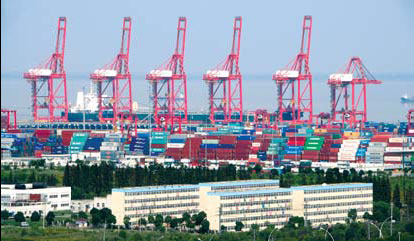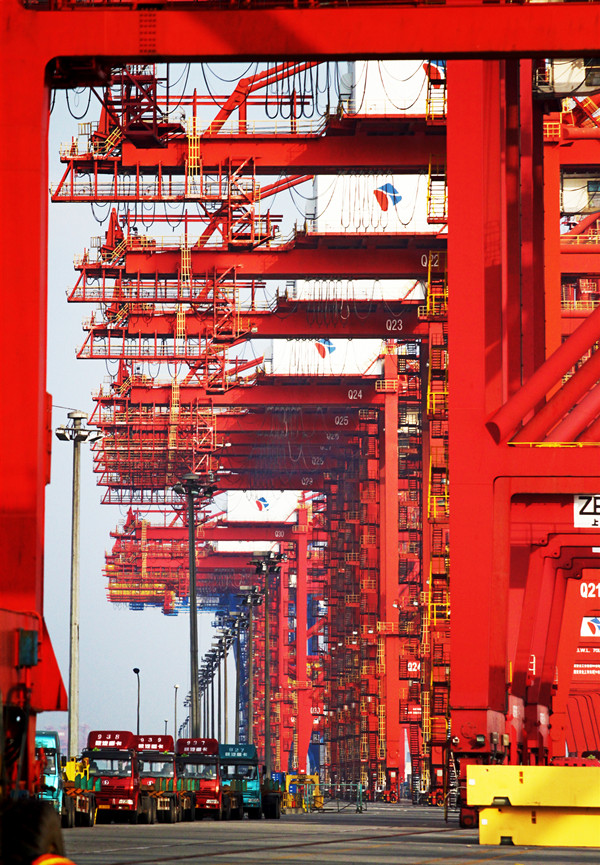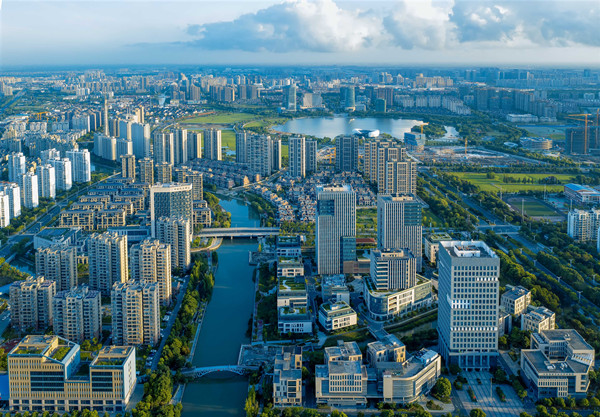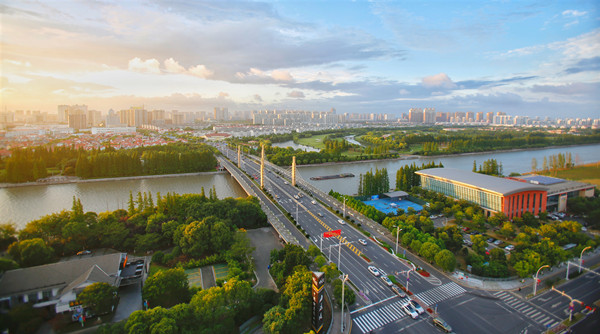County sheds farming past, looks to future
 |
|
Taicang's port area has comprehensive facilities for handling containers, bulk cargo and petrochemicals. [Provided to China Daily] |
This region in eastern Jiangsu province can be thought of as a gift from the Yangtze River.
It began to take shape some 5,000 years ago when the river formed an alluvial plain at its estuary.
Large-scale agricultural development began during the Three Kingdoms Period (AD 220 - 280) when Sun Quan, king of the Wu State, ordered the construction of a number of granaries to store locally produced grains. By doing so, he started a legacy of prosperous agricultural development that spanned nearly two millennia.
Agriculture has long thrived in the area thanks to the fertile soil typical of an estuary alluvial plain as well as well-developed irrigation systems and the rich farming experience of the local people.
But another benefit brought by the Yangtze River is the convenient access to water transportation.
In history, the county has served as a hub for China's domestic and foreign trade.
As an access point for the Yangtze River and the Beijing-Hangzhou Grand Canal, it had trade connections with China's heartland and foreign ports.
Taicang played host to a milestone event in China's foreign trade and exchanges when renowned Ming Dynasty official Zheng He began his seven voyages to the West from the county's Liujiagang Port.
At present, Taicang has nearly 40 kilometers of coastline along the Yangtze, including 25 km of deepwater coast that can be used for ports to berth vessels with capacities of up to 100,000 tons.
It has a port area with comprehensive facilities for handling containers, bulk cargo and petrochemicals. The county now has 99 shipping routes to link domestic and overseas ports.
Taicang is now among the top 10 counties or county-level cities in China in terms of comprehensive economic strength. In 2011, its gross domestic product (GDP) reached 86.6 billion yuan ($13.7 billion), increasing 15.8 percent from the previous year. Its per capita GDP grew to reach 100,134 yuan, a 13.4 percent increase for the year.
Agriculture is no longer the county's dominant industry and now makes up 4 percent of the economic volume. The manufacturing and service sectors account for about 58 percent and 38 percent of the economy, respectively.
However, this does not mean the locals have totally given up the old way of living. Today they still cherish the traditional values that highlight harmony with nature.
Therefore, "building an idyllic, modern city" is the slogan that the government is following in its plans for the future, officials say.
With a stress on ecological protection, the county's natural environment is among the best in the nation.
zhuanti@chinadaily.com.cn









